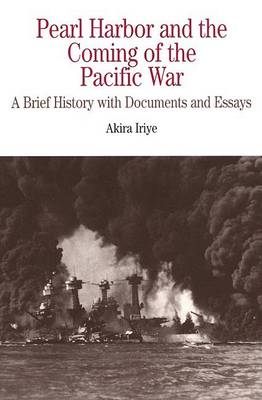The Bedford Series in History and Culture
1 total work
Could more have been done during those frantic months of negotiating between Washington and Tokyo to prevent the surprise attack at Pearl Harbor in 1941? Assembling over 30 primary documents including proposals, memorandums, decrypted messages, and imperial conferences Iriye invites students to view the diplomatic exchanges from both American and Japanese perspectives to determine how and why the US and Japan went to war. A substantial introduction provides background on Japanese aggression in China and Southeast Asia during the 1930s and economic unrest and isolationism in the US to frame the ensuing crisis. Adding an interpretative dimension, Part Two of the volume places Pearl Harbor in global context with essays two published in English for the first time from American, Japanese , Chinese, Soviet, German, British and Indonesian perspectives that explain how various countries applied pressure, offered assistance, exacerbated rifts, and significantly affected negotiations and Japan's ultimate decision for war. Also included are pictures, maps, a chronology and an index.
